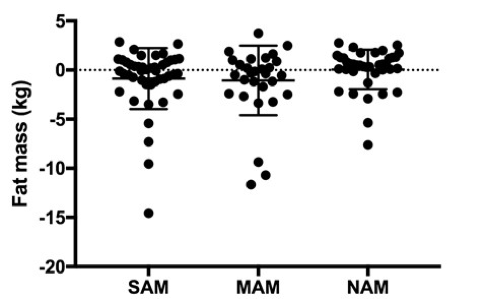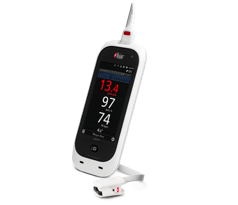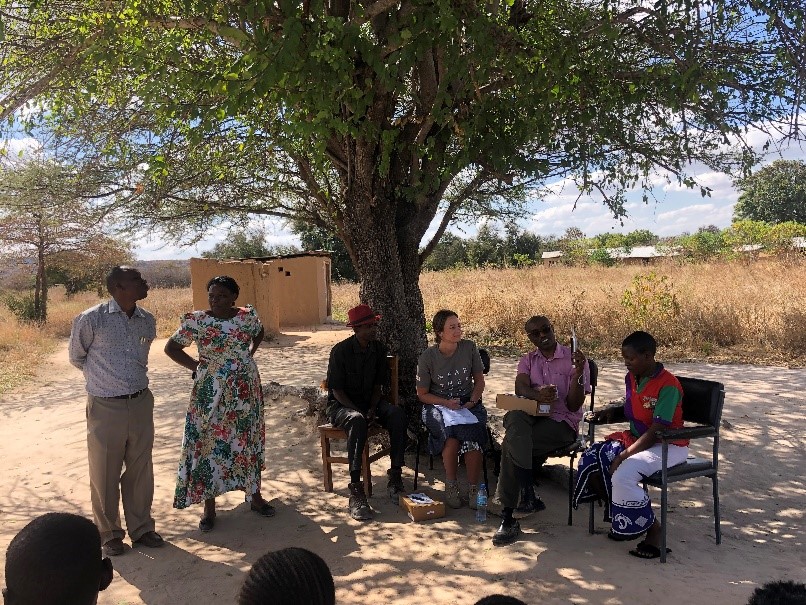Acceptability and perceived usability of a non-invasive haemoglobin monitor among community members and health workers in Tanzania
By Rebecca Smyth, Dr Asrat Dibaba, Abena Thomas, Mwivano Malimbwi, Dr Frank Mtimbwa and Dr Nelson Bukuru
Rebecca Smyth is the Research and Publication Coordinator of Enhancing Nutrition Services to Improve Maternal and Child Health (ENRICH) programme at World Vision Canada.
Dr Asrat Dibaba is the Chief of Party of ENRICH programme at World Vision Canada
Abena Thomas is the Manager and Monitoring and Evaluation Advisor for ENRICH at World Vision Canada.
Mwivano Malimbwi is the ENRICH Project Manager at World Vision Tanzania.
Dr Frank Mtimbwa is the ENRICH Project Coordinator at World Vision Tanzania
Dr Nelson Bukuru is the District Medical Officer at Manyoni District, Singida Region, Tanzania.
The ENRICH Programme is funded by Global Affairs Canada.
Location: Tanzania
What we know: Anaemia is a major global public health problem among women and children in Tanzania.
What this article adds: This study assessed the acceptability and perceived usability of a non-invasive device to measure haemoglobin levels to screen for and diagnose anaemia by community members and health workers in a low-resource setting in Tanzania. Overall, feedback on the usability, acceptability and added value of the device was positive. Community members particularly liked the potential of the device to give real-time health information rather than waiting for results. The device has potential to help overcome existing barriers to screening for and diagnosis of anaemia in both facility and community settings, and to aid rapid treatment. Actual use must be tested in facility and community contexts, and engagement with government officials is needed to discuss suitability for use in the routine health system.
Background
The global burden of anaemia remains stubbornly high, despite being a major public health priority. In Tanzania, anaemia is very common, with a prevalence of 66-71% in children under five years old in some districts (Figure 1). In lower-resource settings, many population groups do not have access to anaemia screening. This study assessed the acceptability and perceived usability of an anaemia-screening, non-invasive device among health workers and community members in Manyoni district in the Singida region of Tanzania.
Manyoni district in Singida was selected as the site for this study as this was where the Enhancing Nutrition Services to Improve Maternal and Child Health (ENRICH) project is located. Singida is a region of central Tanzania with a total population of 1,658,086 (Regional Health Medical Team, 2019). The region is served by 238 health facilities, demonstrating the overburdening of health services, particularly those related to maternal and child healthcare. Prevalence of anaemia, stunting, wasting and underweight is high in children aged 0-59 months (36%, 29%, 4.7% and 11.8% respectively) and amongst women (anaemia, wasting and other health issues, such as malaria and worm infestations; 26%, 16.7% and 22% respectively) (Tanzania Demographic Health Survey (DHS), 2016). Manyoni district has a population of approximately 251,650 and is served by 38 health facilities. In 2018, the top causes of admission to district health facilities were mild, moderate and severe anaemia; pneumonia; urinary tract infections; diarrhoea; sickle cell and typhoid, (Manyoni District Council Annual Health Profile). Maternal and neonatal deaths in the region were primarily a result of anaemia, pneumonia, malaria and post-partum haemorrhage, exacerbated by common delays in reaching health facilities for timely management of illness (Manyoni District Council Annual Health Profile).
Figure 1: Prevalence of anaemia in children under five years of age in

Methodology
The non-invasive device tested was the Rad-67, which simplifies the screening process by providing spot-check monitoring measurements of both oxygen saturation (SpO2) and non-invasive haemoglobin (Hb) (Box 1). Perceived usability was measured by the potential effectiveness, satisfaction and efficiency of the device as evaluated by district hospital health workers on 3 July at Manyoni District Hospital, including doctors, nurses and laboratory technicians. Acceptability was measured by perceptions and attitudes towards the device of community members the following day in Mkwesa and Mbwesa villages, Manyoni.
Health workers were orientated in how to use the device. A qualitative approach was used, based on questionnaires and focus group discussions (FGDs) with health workers and community meetings, based on an interview guide developed by World Vision Canada ENRICH staff. Use of the device was guided by the Rad-67 Orientation Guide provided by Masimo. Perceived usability was evaluated through a questionnaire that included a five-point scale and open-ended questions completed by the health workers at the end of the demonstration, and FGDs to evaluate device features, including visual appeal, display, ease of use, battery, sensor, portability and practicality. The community meetings included discussions regarding the differences between invasive and non-invasive measurements, device acceptability, and personal feedback. FGDs and community meetings were facilitated by both ENRICH World Vision Canada and Tanzania staff alongside the government Regional Community Health Worker Programme Coordinator.
Box 1: Description of the Rad-67 device
The Rad-67 Pulse CO-Oximeter is a non-invasive, total Hb-monitoring technology produced by Masimo, a global medical technology company. The device offers portable spot-check monitoring through a reusable, non-invasive sensor that measures haemoglobin and oxygen saturation levels. The device is portable, with a six-hour rechargeable battery time, and has a high-resolution coloured visual display with touchscreen controls.
The device uses a universal fingertip probe to determine Hb level within 35 seconds, without requiring additional equipment or resources. Readings are communicated in real-time and can be recorded for later review, and data can be transferred by wireless connection to hardware for the analysis or storage of results. The accuracy of the Rad-67, calculated as accuracy root-mean-squared, is 1.1 compared with reference venous total haemoglobin measured by a haematology analyser (Masimo 2019). The device is European Conformity-marked and approved by the United States Food and Drug Administration.
Figure 2: Masimo Rad-67 Pulse CO-Oximeter

Results
Health worker feedback
Twenty-one health workers participated in the survey, including 11 nurses, four laboratory technicians , three medical attendants, two doctors and one paediatric health worker. Health workers considered how the device might be used in screening and diagnosis (Figure 3). They reported appreciating the device’s display screen, charging and battery capabilities, and sensor. Overall, health workers ranked the device 4.8/5 across all categories (Figure 3). Participants responded extremely well to its overall look, ease of use and portability in both ranking and feedback. All participants felt that the device would be practical in the context of their day-to-day work and 85.7% said they would use the device for both screening and diagnostic purposes.
Figure 3: Perceived usability of the device by health worker participants for screening and diagnosis

*screening = detect anaemic cases and refer for further evaluation at health-facility level
^diagnosis = to determine haemoglobin level and prescribe appropriate medications
Direct feedback from health workers included: “It would help with the identification of clients with anaemia earlier”, and “the device would simplify my work.” When asked to select the most important feature of the device, workers ranked rapid results (9), simplification of work (8), non-invasive nature (5) and increased ability for early decision-making (4) as most important. With regard to device function, health workers suggested that the device could be more useful if it had an integrated blood-pressure guage and thermometer. Workers also suggested that the device should have an alternative source of power, such as solar, as mains electricity is not always available.
Figure 3: Health workers’ rating of the RAD-67 features
Community feedback
A total of 50 people attended two community meetings in Mkwese and Mbwasa villages to consider the device’s acceptability. Both groups had male and female participants, ranging in age from adolescents to
seniors. Many of the participants were subsistence farmers, with the remainder identified as government employees or without employment. The facilitators discussed the difference between invasive and non-invasive methods and demonstrated how the device is used to measure haemoglobin. Following two demonstrations on both a male and female community volunteer, each participant was given a chance to handle and closely examine the device. Eight questions were then posed to the group. They included both closed and open-ended questions to best understand the views of the participants. Answers to closed questions were given by a show of hands. At the end of the session, questions from participants were addressed regarding the device and feedback was recorded.
Community members reported overall that the device is visually appealing and looked much like a mobile phone, and therefore was not visually intimidating or uncomfortable. Other features cited as important were the safe nature of the device (no risk of contamination or infection); no pain in comparison to the invasive measure; rapid nature of results; time-saving features for them and health workers; multi-faceted nature of the display, illustrating multiple readings in real-time (e.g. Hb, carbon dioxide saturation, heart rate); portability of the device; ease of education and training necessary for health workers; and sustainability of the device (no need to use and dispose of needles). Notably, community members greatly appreciated seeing their results in real-time, both for the sake of speed and to give them access to their own data, giving them ownership over their health information. In the invasive measure, patient results are known to the laboratory and doctor first and are only communicated to the patient later.
When asked, participants said they would prefer to be examined by the non-invasive device in comparison to the invasive device – consistently mentioning the discomfort of “pricking” with the latter. Community members concluded that the non-invasive device would encourage more people to visit health facilities for check-ups and treatment and that they would recommend use of the device to a family member. Participants noted that the portability of the device and its rechargeable battery would allow it to be used in education and community screening and that it should be made available at village dispensaries and to community health workers. Participants felt there is a great need for such a device in their community.

Limitations
Limitations of the study are that the device was not tested among community health workers, where features such as portability and battery power are more critical to effective use. Actual usability among adults and children and reliability and durability in facility and community settings were also not tested. No cost analysis was undertaken, so cost-effectiveness for scale-up is unknown and no other models or makes of similar devices were tested for comparison.
Conclusions
Overall, feedback on the usability, acceptability and added value of the device was positive from staff and community members interviewed in this district. We conclude that there is potential for the device to help overcome existing barriers to screening for and diagnosing anaemia in both facility and community settings in Tanzania and other low-resource settings to aid rapid treatment. Further testing of the device and engagement with government officials are needed to discuss suitability for use within the routine health system.
References
Abu-Ouf, N., & Jan, M. (2015). The impact of maternal iron deficiency and iron deficiency anemia on child’s health. Saudi Medical Journal,36(2), 146-149. doi:10.15537/smj.2015.2.10289
Tanzania Demographic and Health Survey and Malaria Indicator Survey (TDHS-MIS) 2015-16. Dar es Salaam, Tanzania, and Rockville, Maryland, USA: MoHCDGEC, MoH, NBS, OCGS, and ICF.
Knuston, T., Della-Giustina, D., Tomich, E., Wills, B., Luerssen, E., & Reynolds, P. (2013). Evaluation of a New Nonnvasive Device in Determining Hemoglobin Levels in Emergency Department Patients. The Western Journal of Emergency Medicine, 14(3). Retrieved August 1, 2019, from www.ncbi.nlm.nih.gov/pmc/articles/PMC3656712/.
Lozoff, B., Beard, J., Connor, J., Felt, B., Georgieff, M., & Schallert, T. (2006). Long-Lasting and Behavioral Effects of Iron Deficiency in Infancy. Nutrition Reviews,64(5). doi:10.1301/nr.2006.may.S34-S43
Masimo. (2019). Masimo Rad 67 Pulse CO-Oximeter User Manual. Retrieved August 1, 2019, from https://techdocs.masimo.com/globalassets/techdocs/pdf/lab-10262a_master.pdf
Regional Health Medical Team. Singida Region. 2019.
World Health Organization. (2008, July 09). Global anemia prevalence and number of individuals affected. Retrieved June 13, 2019, from www.who.int/vmnis/anaemia/prevalence/summary/anaemia_data_status_t2/en/
World Health Organization. (2011). Hemoglobin concentrations for the diagnosis of anemia ... Retrieved June 13, 2019, from www.who.int/vmnis/indicators/haemoglobin.pdf
World Health Organization. (2018, September 26). Global Nutrition Targets 2025: Anemia policy brief. Retrieved June 13, 2014, from www.who.int/nutrition/publications/globaltargets2025_policybrief_anaemia/en/
Masimo Clinical Evidence, 2019 www.masimo.com/evidence/pulse-co-oximetry/sphb/

